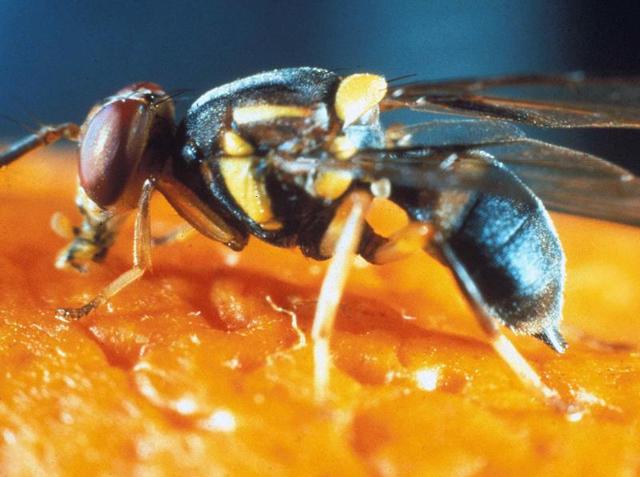Fruit fly sperm movement to help improve fertility
The three-member team of TIFR scientist said understanding this process could help develop better contraceptives and improving fertility of an organism
For the first time, scientists at the Tata Institute of Fundamental Research (TIFR) have captured live movement of sperms going out of the testis of a fruit fly. The three-member team said understanding this process could help develop better contraceptives, and improve the fertility of an organism.

“No one has been able to document the event live despite a lot of research in the area,” said Krishanu Ray, associate professor, department of biological sciences, TIFR.
He said, “A sperm cell develops within a closed chamber made by the surrounding tissue. At the end of the process, the mature sperm needs to exit the chamber to fertilise an egg. If the process is blocked due to genetic defects or environmental conditions, then the animal becomes sterile.”
Using Drosophila melanogaster, the common fruit fly (widely used in biological studies), the team found that the tails of the mature sperm were pushed out of the enclosure by a mechanism that is still unclear. Currently, the theory suggests that sperm cells are pushed out by the surrounding tissue.
“It is not known whether a similar mechanism is adopted in humans or not. One can conduct similar experiments in the testis of a mouse and other animals,” said Ray.
Further studies will be conducted to examine if the movement of the sperm outside the testis is assisted by suction in the ducts, and to understand its mechanism.
The researchers also found that each time a sperm tried poking a neighbouring cell, the cell gathered a small protein called actin around the indented membrane and pushed it out.
“This phenomenon of reactive f-actin dynamics was not demonstrated for any organism until now,” said researchers, adding the finding could explain why sperm cells do not penetrate somatic cells (all other cells in the body except reproductive cells) when they travel through the testicular ducts before meeting an egg.
Previous studies have shown that plant cells use local f-actin machinery to strengthen the cell wall and prevent fungal invasion. “Such a phenomenon can also be a first line of defence of certain cells in animals. For example, the cells lining our gut and skin are frequently bombarded by microbes and rigid nano particles that can puncture the cells and cause ulcers,” said Ray.
Researchers said the study is significant since it shows that highly mobile sperms are protected with support cells in the testes until they are ready to be released — a factor that is important for conception.
“Future work will tell us about how communication between the sperm cells and the support cells is important for timely release from the testes,” said Richa Rikhy, professor of biology, Indian Institute of Science Education and Research, Pune.
Stay updated with all the Breaking News and Latest News from Mumbai. Click here for comprehensive coverage of top Cities including Bengaluru, Delhi, Hyderabad, and more across India along with Stay informed on the latest happenings in World News.
Stay updated with all the Breaking News and Latest News from Mumbai. Click here for comprehensive coverage of top Cities including Bengaluru, Delhi, Hyderabad, and more across India along with Stay informed on the latest happenings in World News.





